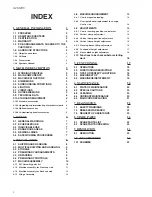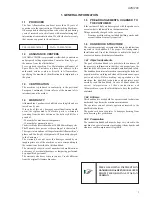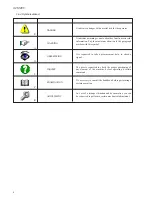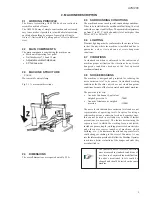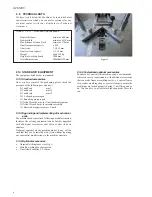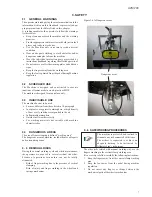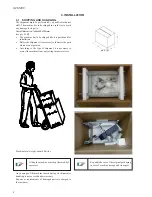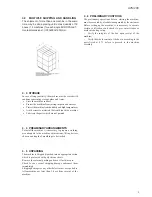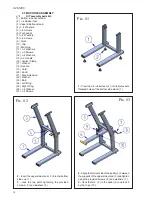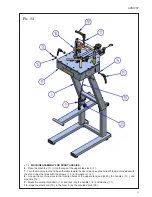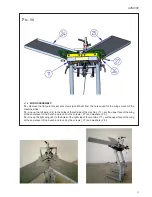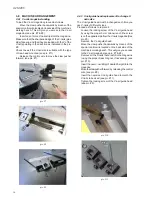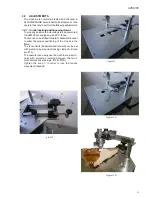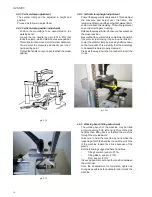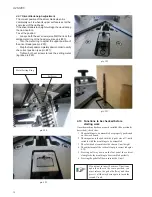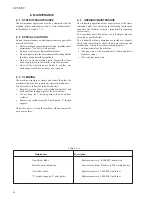
5
A2M 200
2. MACHINE DESCRIPTION
2.1
WORKING PRINCIPLE
The Frame Assembling A2M 200 has been realized to
assemble any kind of frame.
The A2M 200 being of simple construction and extremely
easy to use, makes it possible to join with absolute precision
any kind of moulding by means of special steel V-nails.
It uses V-Nails with the “pulling power” effect in different
sizes.
2.2
MAIN COMPONENTS
The main components constituting the machine are:
•
Mechanical operating foot pedal
•
Nail heads sizes 7, 10 and 15 mm.
•
Adjustable vertical hold down;
•
90° fences size.
2.5
SURROUNDING CONDITIONS
The machine does not need special surrounding conditions.
It has to be installed inside an industrial building, lit, aired
and with a compact and flat floor. The permitted temperatures
go from 5° to 40° C, with a humidity level not higher than
50% at 40° C or 90% at 20° C.
2.6
LIGHTING
Premises lighting must be conformed to the norms in force
in that Country where the machine is installed and has to
guarantee a clear view and can not create dangerous
situations.
2.7
VIBRATIONS
In standard conditions conformed to the indication of
machine proper utilization the vibrations do not create
dangerous conditions because of the foot operated
mechanical machine.
The indicated noise levels are emission
ones measured in standard conditions of
use. In case of any machine modification,
the above mentioned levels could be
changed and should be tested on the same
machine.
2.3
MACHINE STRUCTURE
-
Z AXIS
Movement of vertical clamp
Fig. 2.1 A movement directions
2.4
DIMENSIONS
The overall dimensions are reported on table 2.9-A
2.8
NOISE EMISSIONS
The machine is designed and projected for reducing the
noise emission level to its source. In standard working
conditions the Machine noise does not create dangerous
conditions because of the foot operated mechanical machine.
The power nois level is:
•
Acoustic Continuous Equivalent
weighed pression A
<70dB
•
Acoustic Istantaneous weighed
pression
<130dB
The noise levels indicated are emission levels and are not
representative of operating levels. In spite of existing a
relationship between emission levels and exposure ones,
this can not be used in a reliable way to define if further
precautions are necessary. The factors determining the
exposure level to which the working force is subjected,
include exposure length, working premises characteristics
and other noise sources (number of machines, closed
building, etc…). Furthermore the allowed exposure levels
could change according to the several Countries. At any
rate the information provided will allow the Machine Operator
to achieve a better evaluation of the danger and risks they
are submitted to.


